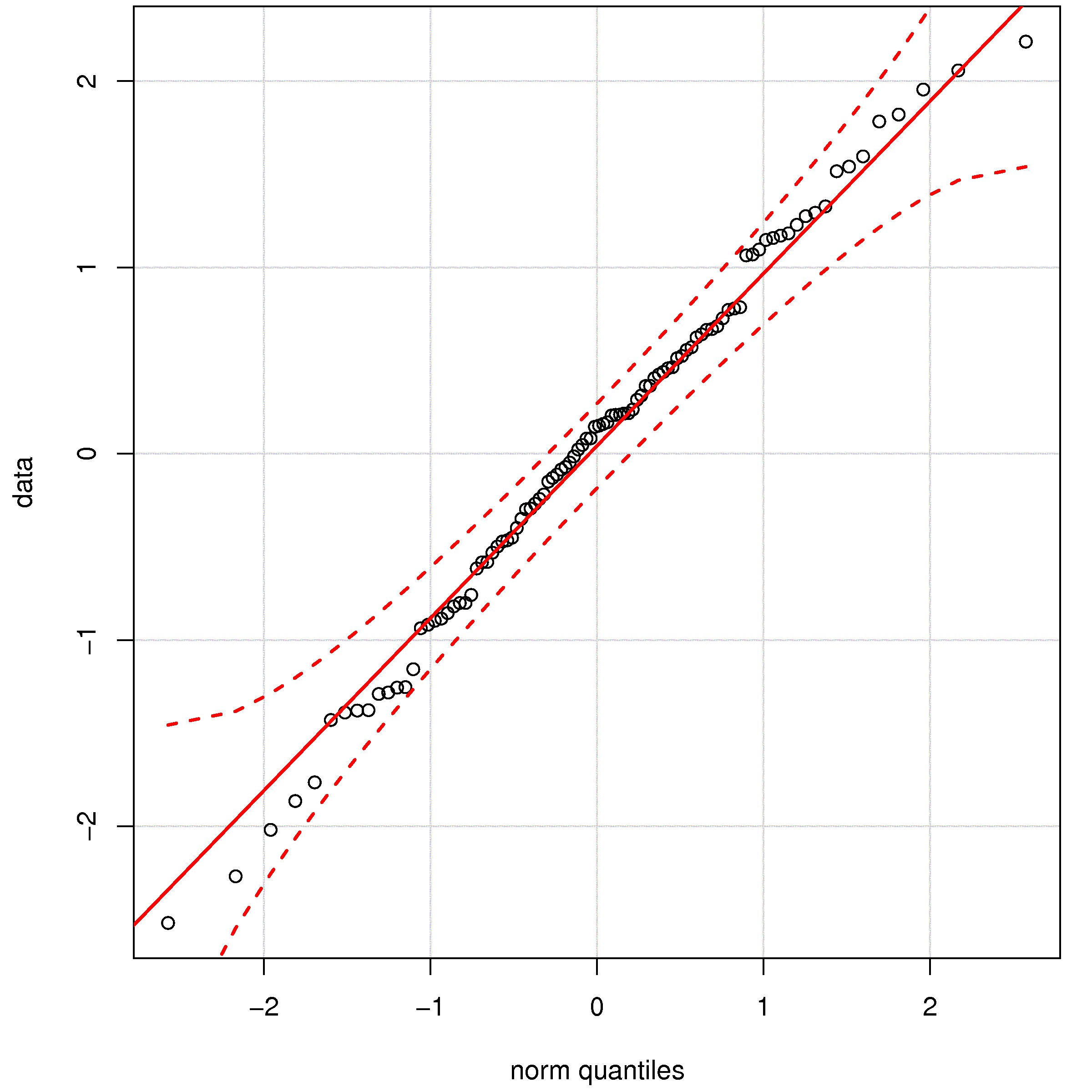Software tutorial/Extending R with packages
<rst> <rst-options: 'toc' = False/> <rst-options: 'reset-figures' = False/> The basic R installation is pretty comprehensive. One of the advantages of R though is that it is constantly being updated with new packages. A package is collection of functions and other information that expand R's capabilities.
For example, the built-in ``qqnorm(...)`` can be used to test if a sequence of values came from a normal distribution. However, there is, in my opinion, a better qq-plot function in the ``car`` library, called ``qqPlot(...)``, however the ``car`` library does *not* come pre-installed with R.
This section shows how to install extra packages and to keep your R installation up to date.
Keeping R up to date
Even if you don't want to install extra packages, you should keep the built-in packages up to date. You require an internet connection for this step.
At the R command prompt, write:
.. code-block:: s
update.packages()
.. rubric:: Mac users
- Click on ``Packages & Data`` on the top menu
- Choose ``Package Installer``
- Click ``Get list``
- If this is your first time updating, then you will have to select the closest update mirror (web site).
- Typically you would choose the mirror that is geographically closest to you: for example ``Canada (ON)``. You can have R remember your choice for the future.
- Click on the ``Update All`` button to have R check that your built-in packages are up to date at the latest version.
.. rubric:: Windows users
- Click on ``Packages`` on the top menu
- Choose ``Update packages``
- If this is your first time updating, then you will have to select the closest update mirror (web site).
- Typically you would choose the mirror that is geographically closest to you: for example ``Canada (ON)``. You can have R remember your choice for the future.
- Click ``OK`` once it shows you the list of packages that will be updated.
R will fetch and install any updates it requires.
Installing a new package
Installing a new package is easy; finding the package to install that does what you want is a little tougher: there are over 2000 packages available. Here are 2 ways I typically discover packages.
- . By browsing the hierarchy of packages at http://cran.r-project.org/web/views/
- . Googling: for example, the other day I needed to figure out how to plot time-series data nicely. I came across a page that recommended the ``xts`` package.
.. rubric:: Mac users
- Click on ``Packages & Data`` on the top menu
- Choose ``Package Installer``
- Click ``Get list``
- Select the packages from the list (you can select more than one by holding down the ``Command`` key on a Mac).
- Make sure you select the check box ``Install dependencies``
- Then click "Install Selected"
.. rubric:: Windows users
- Click on ``Packages`` on the top menu
- Choose ``Install packages``
- Select the package(s) you wish to install
- Click ``OK``
Once the library is installed, you first need to load it. For example, to generate a nicer qq-plot using the ``car`` package:
.. code-block:: s
data <- rnorm(100) # create 100 normally distributed values library(car) qqPlot(data)
will generate: </rst>
<rst> <rst-options: 'toc' = False/> <rst-options: 'reset-figures' = False/> To see a list of all functions that are provided by a package:
.. code-block:: s
help(package="car")
